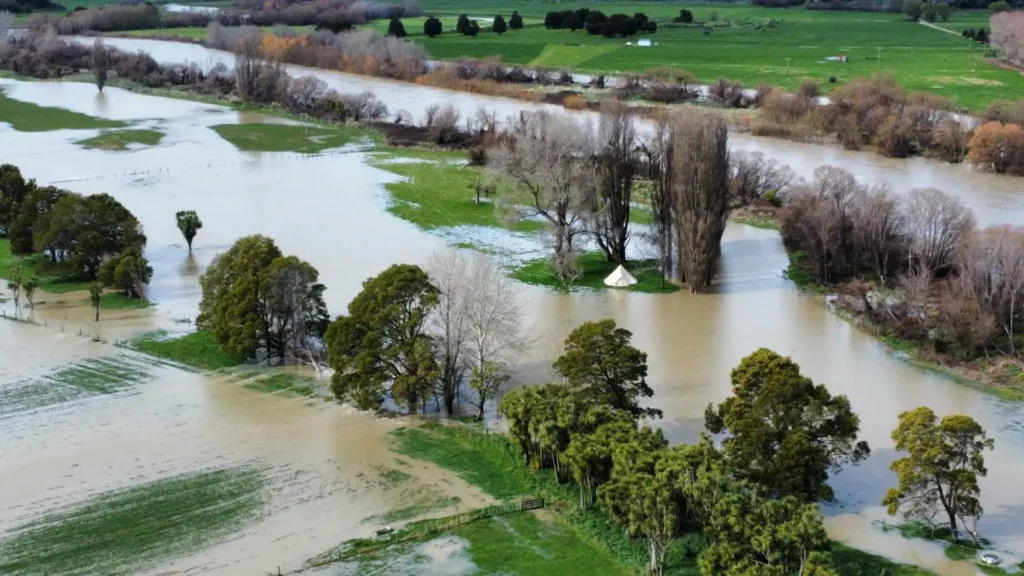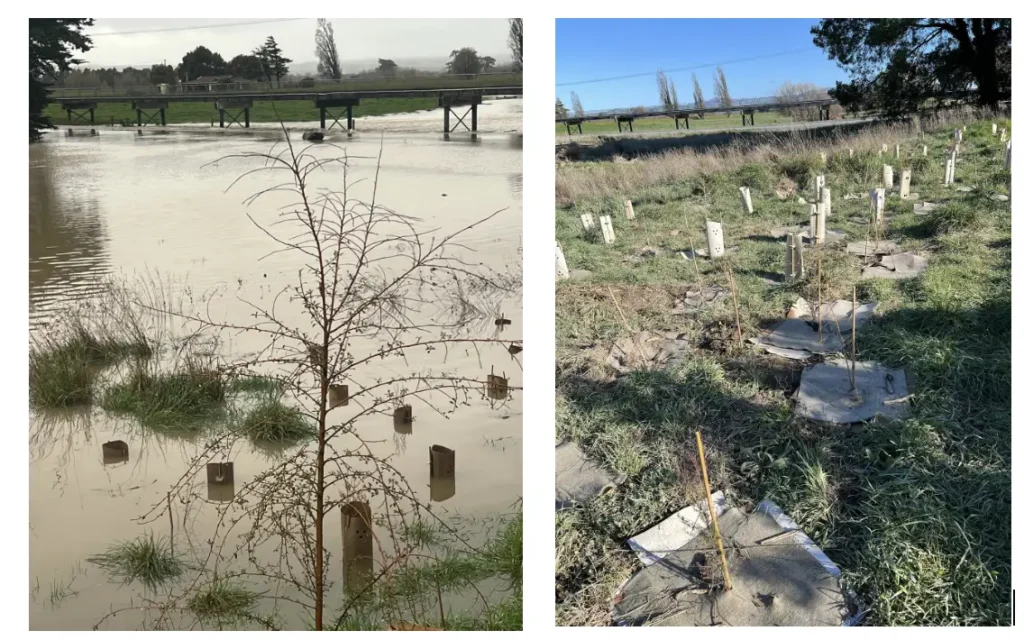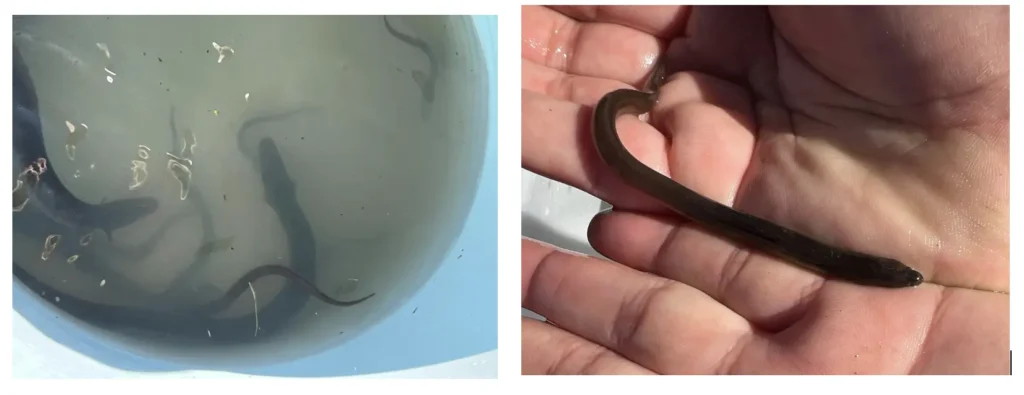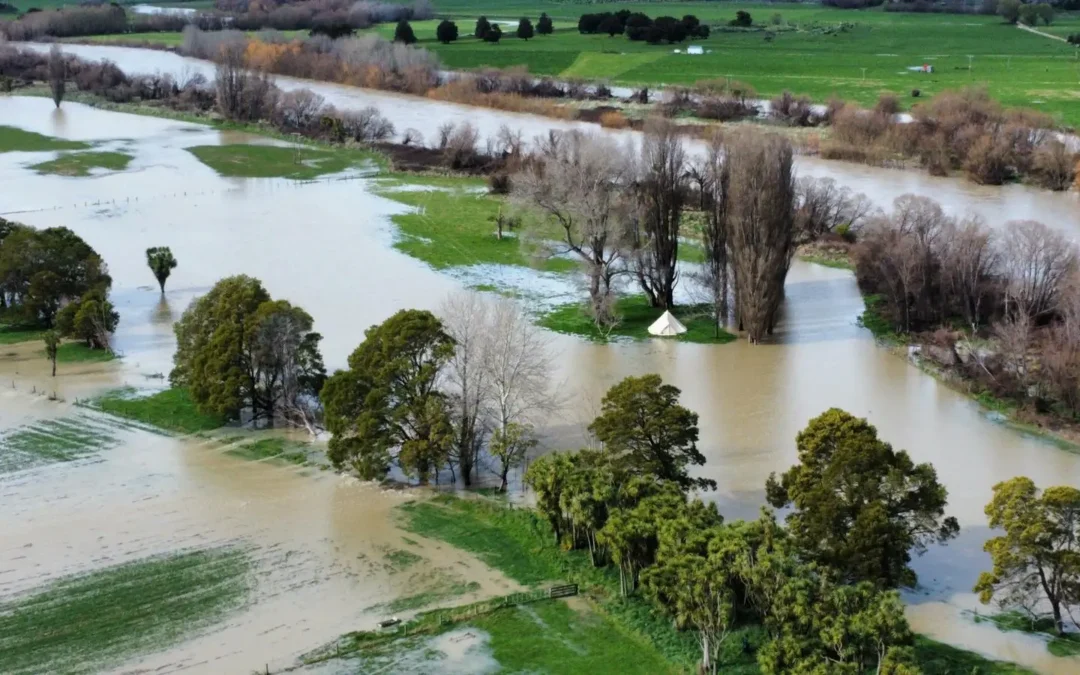We have recently had a flood, not a big one by our standards but enough to close the road and cover a large part of this farm for about 30 hours. It was not a real concern as we are used to having one or two floods per year. However this was the first significant flood since we have done all this planting of trees and grasses in our restoring wetland. In the small hours of the night we wondered how they would withstand the force of the water. Less important but still concerning was that Jane and Rod have recently erected a large bell tent close to the river which has already proved its use as a field classroom.

They had decided not to take the tent down as it was on a slightly higher piece of ground albeit fairly close to the river. We were warned that the flood would peak at 1am and Rod flew his drone early the next morning to check out the scene. Almost miraculously it showed the water had stopped about 18 inches from the front of the tent. That was a small relief, but what about the planting? Year 5 and 6 of Martinborough school had put in more than 150 Kahikitea and other trees and grasses only ten days previously. How had they withstood the waters, which were already starting to recede? To our amazement, Rod and Jane reported that most of the trees had survived well, apart from a good coating of silt. We hope a decent rain will wash that through. The water was receding, the grass was already standing up and it seemed like none of the planting mats or tree guards had been washed away. Jane told me she observed the waters moving slower over the set aside and planted wetland, compared to the well grazed paddock beside the wetland, both of which are in the Tawaha spillway. This was a scheme devised in the 1960’s and begun in the 1970’s to protect a larger part of our farm and others in the lower reaches of the Wairarapa Valley from going under water when the Ruamāhanga River flooded, which it has always done with regularity. I notice that my thinking has now changed. Rather than wanting the water to move quickly across the land, it seems that the flood brought more positives than negatives. The land had had a wonderful saturation, and hopefully the underlying aquifer was replenished which should help us through yet another predicted dry summer.

What we saw was exciting but it was not the end of it. Parawhenuamea (the force behind the journey of our rivers) in her generosity had given the whenua both soaking and a rich top dressing of nutritious silt. She had also sent us gifts of another kind in the form of creatures for the wetland. Two days after the flood we had a visit from Kara Kenny and Maddy Glover, the freshwater biologists from the charity Mountains to Sea and seven children from the Montessori year 6 class at Southend School and their teachers. Maddy had set an un-baited long tube fish net by a little bridge which is in the heart of the spillway. To our delight the net yielded two largish long finned eels and seven babies, the size of a child’s hand, which were returned to the water. So we know our efforts on creating a healthy wetland ecology are already fulfilling our dream that it will become a place vibrant with life, attracting not only birds but fish of all kinds.

It is so fascinating for me to live through such changes of attitude since I first came to the Wairarapa, now more than 50 years ago. Back then the river was something to be feared, fought and controlled. Whereas now, I have the impression a growing number of people are learning to work with the river in a more harmonious way.
Words by Yvonne Riddiford
